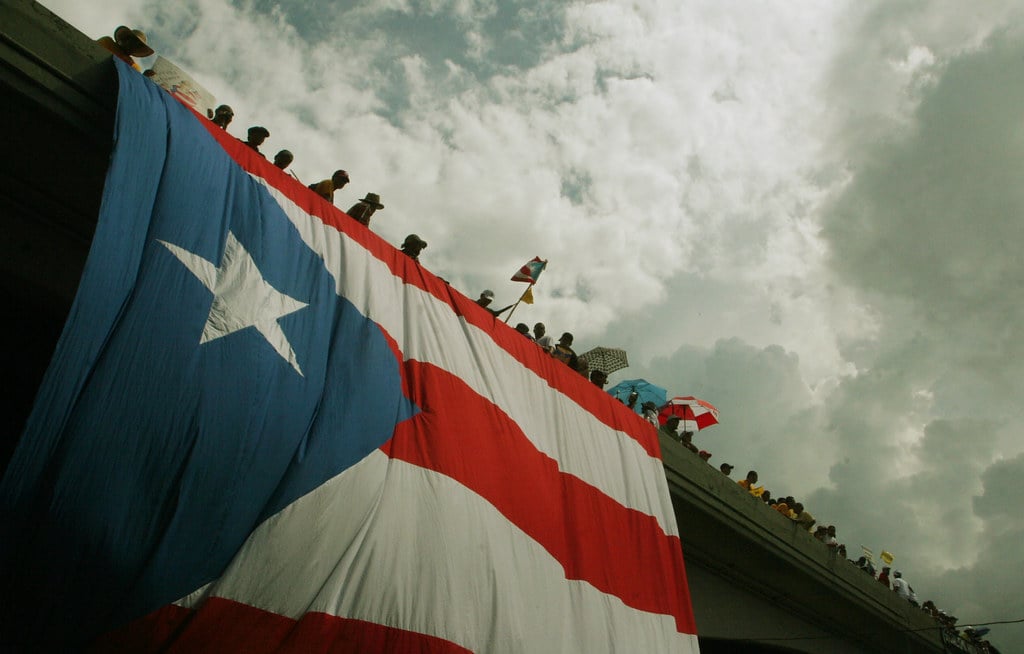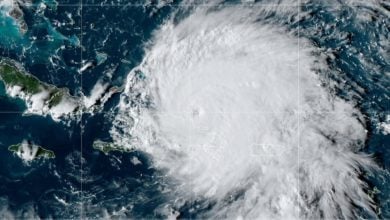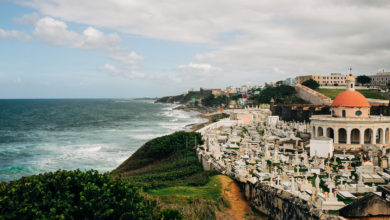For the many people who have engaged in the struggle for Puerto Rico’s independence, July 25 has a special significance. On that date in 1898, U.S. troops invaded Puerto Rico, beginning a period of U.S. colonial domination on the island that continues to this day.
 U.S. forces used the explosion on the USS Maine as a pretext for seizing Spain’s colonies. |
The United States invaded Puerto Rico, along with the Philippines, Guam and Cuba, in the setting of the Spanish-American War. That war was the opening of what would be the menacing role and predatory nature of the U.S. capitalist class in the Caribbean, Latin America and the entire world.
The seizure of Puerto Rico, Cuba, Guam and the Philippines by the United States signaled the quest of the U.S. capitalist class to become a world power. European powers had pursued a policy of colonial acquisitions since the end of the 15th century.
But only in the late 19th century had the mature and developed capitalist powers virtually colonized the entire planet. The projection of U.S. power outside of the North American mainland signified a rush not to be left behind in this global division of markets.
Imperialism was transforming from a policy into a global system. No capitalist power could stand on the sidelines. Eventually this scramble and competition for colonies led to the first “world war” in human history, from 1914 to 1918, involving all the major capitalist powers.
V.I. Lenin noted this trend in the very first sentence of his classic 1916 work “Imperialism the Highest Stage of Capitalism.” “During the last 15 to 20 years, especially since the Spanish-American War (1898) and the Anglo-Boer War (1899-1902), the economic and also the political literature of the two hemispheres has more and more adopted the term ‘imperialism’ to describe the present era.”
Until the Spanish-American War, capitalism in the United States was focused on expansion within North America. The expansion came from the push west and the seizure of the land of the Native American population and the theft of nearly half of Mexico’s territory in the 1846-1848 U.S.-Mexican War.
Following the end of chattel slavery and the conclusion of the U.S. Civil War in 1865, industrial capitalism was able to grow rapidly. Facilitating trade and the transfer of raw materials, railroad track was laid throughout the entire stretch of the U.S. territory. Mining of raw materials increased. Factories, ports, bridges and dams were constructed at a greater pace.
Beneath this supposed progress in U.S. society, there was a tremendous cost in human suffering. The consolidation and expansion of capitalism in the country could be measured by the genocide of the indigenous people—Native Americans. By the late 1890s, Native people were virtually annihilated within the territories of the continental United States with the close of the so-called “Indian Wars.”
Eventually the dynamism of capitalism meant that the home market was insufficient. New markets, raw materials and cheaper labor were increasingly required for continuation of a vast increase in productive forces. Capitalist development began to be propelled in the direction of a new kind of expansionism, aimed at subordinating the economies of other lands.
The competition between the United States and Spain
The more benefits that U.S.-based companies derived from economic investments made in the Spanish colonies of Cuba and Puerto Rico before the war—amounting to $50 million in 1897—the more that U.S. manufacturers and bankers desired direct control of these markets.
Throughout the 1890s, there was a growing war fever among the U.S. ruling class. Prominent bourgeois figures, politicians, journalists and the clergy encouraged hostilities and openly called for the military seizure of Spain’s remaining colonies. “Democracy” and “freedom” became the banner for all sorts of demagogic warmongers.
Militarism and arrogance, nurtured by capitalist expansion in the centuries of campaigns to expel Indigenous people from their lands and enforce a genocidal system of slavery, were now utilized to justify imperialist expansion. The use of brutal force against people in the invaded lands was justified as “divine will” or “manifest destiny.”
With mounting tensions between Washington and Madrid, the U.S. Navy targeted and harassed any vessel flying the Spanish flag in the open sea. U.S. Navy warships were instructed to stop Spanish freighters, carry out searches, and in many cases seize the cargo. This was despite the fact that a state of war did not yet exist.
Spain was a crumbling feudal power facing severe internal political strife. It no longer had the empire status that it enjoyed centuries ago. The Spanish government was not in a position to engage in hostilities with any country—especially the United States, which was demonstrating its industrial might and was obviously eager to test its military ability.
A pretext for war
On the evening of Feb. 15, 1898, the battleship USS Maine exploded while docked in the harbor of Havana, Cuba. While 266 sailors were killed as they slept in their quarters, the ship’s captain and his close officers were not harmed.
Washington officials were quick to blame the Spanish government, claiming that the explosion was caused by a floating mine. The fact that many eyewitnesses saw the force of the explosion coming from within the bow of the ship did not matter to U.S. investigators.
Later investigations discounted the possibility of a mine explosion altogether. Whatever the cause, the Spanish government was in no way responsible.
Despite Spain’s repeated diplomatic efforts and willingness to compensate for the loss of life and the destroyed ship, the U.S. government exploited the situation as a perfect excuse for war.
On April 25, 1898, President William McKinley, with the consent of the U.S. Congress, made his infamous declaration of war against Spain. The United States would now be recognized as a world imperialist power.
The military campaigns that followed impacted the lives of millions of people in the Philippines, Guam, Cuba and Puerto Rico. They were now to become subjects of a new colonial oppressor.
On July 25, 1898, 26,000 U.S. soldiers stormed the shores of Guanica, Puerto Rico—the stepping-stone to the invasion of the entire island nation. The invasion was led by the notorious Gen. Nelson Appleton Miles—a reliable servant of U.S. capitalist expansion in the western U.S. states. Miles was infamous for his role in the suppression of the Pullman strike and other labor struggles. He was also known for his capture of Native leaders like Geronimo and Sitting Bull after hard fought resistance battles waged by Native people. But Miles’ most outstanding crime was the Dec. 29, 1890, massacre of 300 Indigenous men, women and children at Wounded Knee, South Dakota.
As the U.S. Army marched through the mountains of Puerto Rico, they encountered peasants who had been forewarned of the invasion’s brutality. These mountain people, armed solely with machetes, valiantly attacked the invaders. Those captured by the invaders were often bound to trees and shot.
That resistance today symbolizes the beginning of the ongoing Puerto Rican resistance to U.S. colonialism.
The U.S. military occupations in the Philippines, Guam, Cuba and Puerto Rico were the opening shots of a wave of imperialist invasions over the next decades in the Western Hemisphere and other parts of the world. U.S. troops were sent to Nicaragua in 1898 and again in 1899, 1907 and 1910, and from 1912 through 1933; to Panama from 1901 through 1914; to Honduras in 1903 and again in 1911; to the Dominican Republic in 1903; to Korea in 1904; to China in 1911; to Mexico from 1914 through 1918; to Haiti from 1914 through 1934; to Cuba in 1906 to 1909, 1912 and again from 1917 through 1933; to the Soviet Union from 1918 through 1922; and to Guatemala in 1920.
The list continued throughout the 20th century. With hundreds of military bases around the world today, U.S. military interventions are a constant feature of world affairs.
Continued anti-colonial struggle
The big business mass media make every effort to disguise the foreign subjugation of Puerto Rico. But events take place that push the truth about the U.S. occupation to the surface. The FBI assassination of Machetero leader Filiberto Ojeda Rios in September 2005 and the struggle to stop U.S. Navy bombing on the Puerto Rican island of Vieques in 2000 were two recent cases. The recent wave of demonstrations denouncing the colonial government’s closing of public schools and services in May was another.
Despite the many U.S. claims about Puerto Rico’s “progress,” the island’s people never asked to be invaded and colonized, have economic hardships imposed upon them or be forced to uproot and emigrate to the colonizing country. Within the United States, Puerto Ricans are among the poorest nationalities.
The U.S. invasion of July 25, 1898, is why today Puerto Ricans have no say in any fundamental matters pertaining to the economic and political life of their homeland. The U.S. government’s colonial policy denying the Puerto Rican masses their right of self-determination and independence accounts for the continued people’s resistance there.
Articles may be reprinted with credit to Socialism and Liberation magazine.





